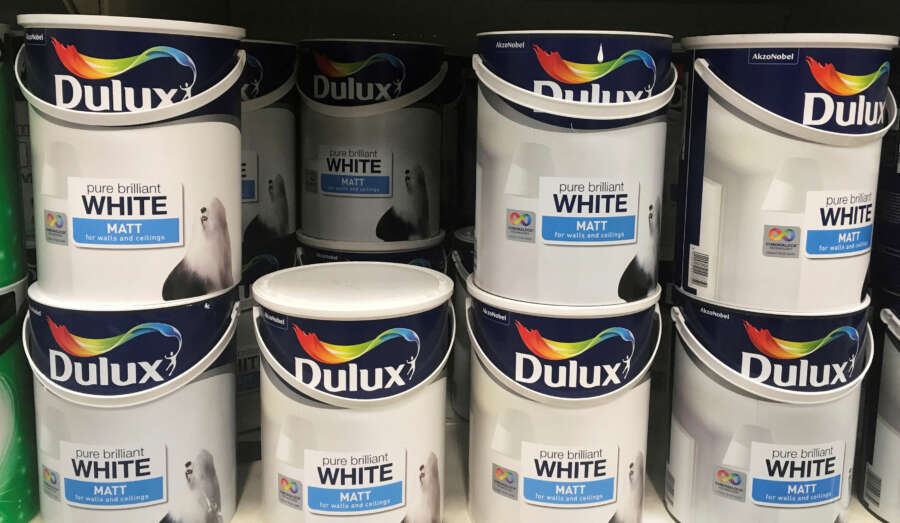
By Matteo Allievi
(Reuters) -Dutch paints and coatings maker Akzo Nobel raised its annual profit outlook on Tuesday, supported by declining raw material costs and resilient demand.
“We expect the second half of the year to be slightly better than the first one, but not significantly better,” CEO Grégoire Poux-Guillaume told Reuters.
Poux-Guillaume said volumes were rising in anything linked to automotive, marine and air space, while the building and construction sectors were suffering more.
The maker of Dulux and Flexa paints raised its 2023 outlook for adjusted core earnings (EBITDA) to 1.4-1.55 billion euros ($1.55-$1.72 billion, with a midpoint slightly above analysts’ consensus forecast of 1.44 billion.
The shares were up 2.4% at 76 euros as of 1110 GMT.
Akzo said it saw the first benefits of easing raw material costs in the second quarter.
“We saw raw materials starting to turn especially in the Coatings business, while in Decorative Paints they were still up,” Chief Financial Officer Maarten de Vries said on a media call.
Paint makers passed on steep raw material costs to customers last year through price increases. Akzo’s prices in the second quarter were up 5% from a year earlier, to offset wage and energy cost inflation, it said.
Its adjusted EBITDA rose 18% to 397 million euros in the quarter, slightly below the 403 million expected by analysts.
Akzo, which has warned of volume weakness due to the uncertain economic situation, said volumes were better than expected in the first half, declining by 2%.
Asked about destocking trends, de Vries said in an interview that customers’ inventories were now roughly in line with pre-pandemic levels. The only market where they were taking longer to normalise was China, where the economic rebound had lost steam, the CEO and CFO said.
“It’s not picking up as quickly as we would like but the recovery is on the way and it is getting in the right direction,” Poux-Guillaume added.
Akzo forecast low single-digit percentage volume growth in the second half due to easier year-ago comparisons, resulting in volumes in line with last year’s.
($1 = 0.9032 euros)
(Reporting by Matteo Allievi in Gdansk; editing by Milla Nissi, Jason Neely and Sharon Singleton)


